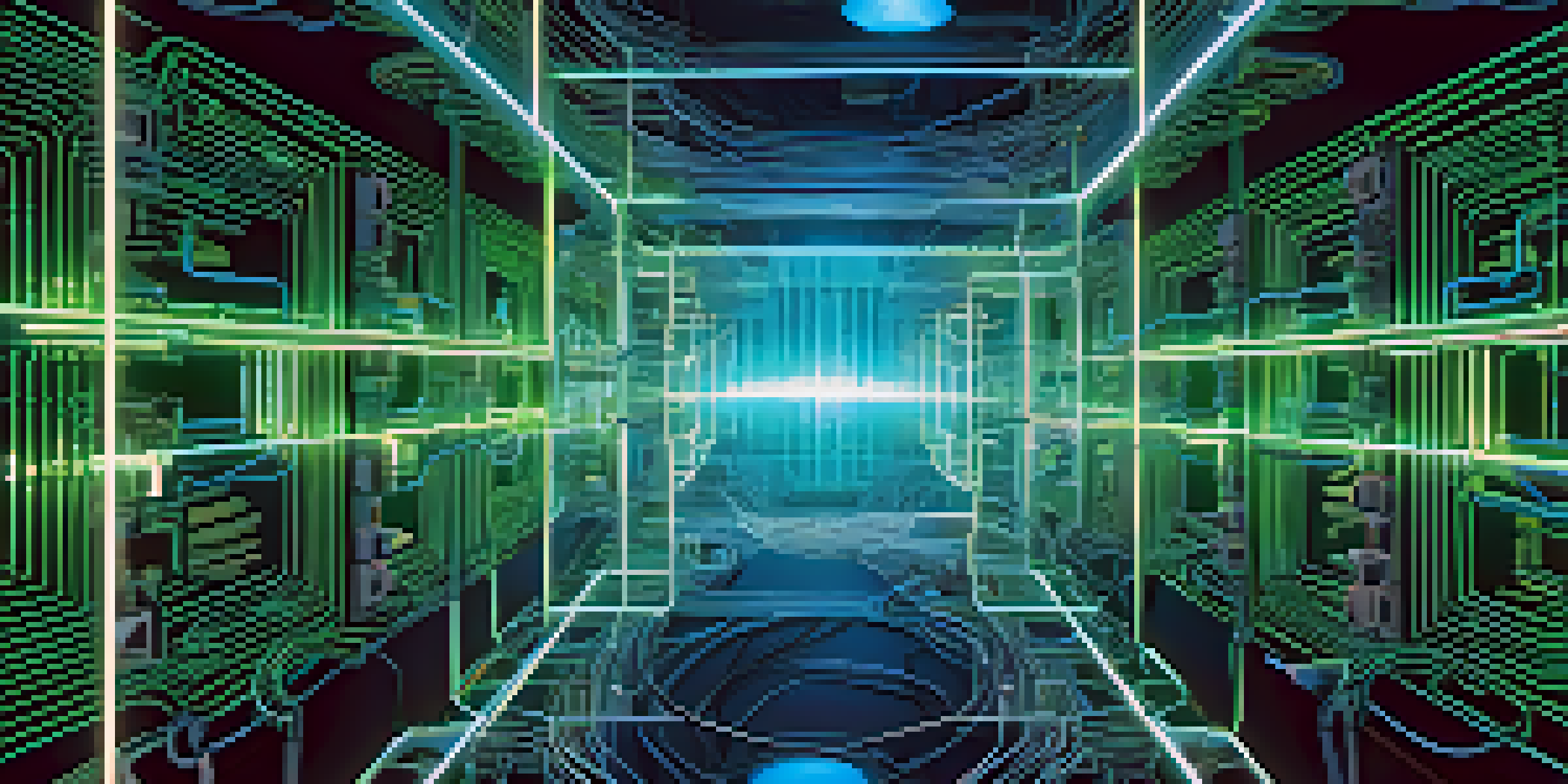Quantum Gates: The Building Blocks of Quantum Algorithms

What Are Quantum Gates and Their Purpose?
Quantum gates are fundamental components of quantum computing, analogous to classical logic gates. They manipulate quantum bits, or qubits, which can exist in multiple states simultaneously thanks to superposition. This unique property allows quantum gates to perform complex calculations far more efficiently than traditional methods.
We are at the dawn of a new era in computing. Quantum computers will outperform classical computers in many tasks, solving problems that were once thought to be intractable.
Each quantum gate performs a specific operation on qubits, altering their states in a controlled manner. For example, the Hadamard gate transforms a qubit from its definite state into a superposition, paving the way for more intricate quantum algorithms. Essentially, these gates are the building blocks that enable quantum computers to tackle problems that are currently intractable for classical computers.
In summary, quantum gates are essential for executing quantum algorithms, providing the means to manipulate qubits in ways that unlock the true potential of quantum computing. By understanding these gates, we gain insight into the power of quantum algorithms and their future applications.
Types of Quantum Gates and Their Functions
There are several types of quantum gates, each serving a unique function. Common gates include the Pauli-X, Pauli-Y, and Pauli-Z gates, which correspond to rotations around the X, Y, and Z axes of the Bloch sphere, a representation of qubit states. These gates effectively flip or change the state of a qubit, allowing for a diverse range of operations.

Another important gate is the CNOT (Controlled-NOT) gate, which operates on two qubits. It flips the second qubit (the target) only if the first qubit (the control) is in the state one. This gate is crucial for creating entangled states, which are a key resource in quantum computing, enabling parallel computations that classical systems cannot achieve.
Quantum Gates Enable Complex Calculations
Quantum gates manipulate qubits, allowing quantum computers to perform calculations far more efficiently than classical systems.
Understanding the various types of quantum gates and their functions helps demystify how quantum algorithms are constructed. Each gate contributes to the larger puzzle, allowing quantum computers to perform complex tasks more efficiently than their classical counterparts.
The Role of Quantum Gates in Quantum Circuits
Quantum gates are combined to create quantum circuits, which are the quantum equivalent of classical circuits. A quantum circuit consists of a sequence of quantum gates applied to qubits, enabling various algorithms to be executed. The arrangement and choice of gates directly influence the output, making the design of quantum circuits a critical aspect of quantum computing.
Quantum entanglement is not just a characteristic of quantum systems; it is the key that unlocks the potential of quantum computing.
Just as in classical computing, where the arrangement of logic gates determines the function of a circuit, quantum gates also require strategic placement to achieve the desired outcome. Quantum circuits can solve problems like factoring large numbers or simulating quantum systems, demonstrating their power in fields like cryptography and material science.
In essence, quantum gates form the backbone of quantum circuits, allowing complex algorithms to be realized. As researchers continue to develop more efficient quantum circuits, the potential applications of quantum computing are expanding rapidly.
Quantum Gates and Superposition: A Dynamic Duo
Superposition is one of the defining features of quantum computing, and quantum gates play a crucial role in harnessing this property. By applying specific gates, qubits can be placed in superposition, representing multiple states at once. This capability is what gives quantum computers their unparalleled speed and efficiency in processing information.
For instance, when a Hadamard gate is applied to a qubit, it creates a state that is a combination of both '0' and '1'. This means that a quantum computer can evaluate multiple possibilities simultaneously, significantly speeding up problem-solving processes. The synergy between quantum gates and superposition is vital for the execution of powerful quantum algorithms.
Entanglement Enhances Computational Power
Quantum gates can create entangled qubits, enabling instantaneous state influence and enhancing the efficiency of complex computations.
Ultimately, quantum gates and superposition work hand in hand to unlock the true potential of quantum computing. As researchers explore new gates and their applications, our understanding of how to exploit these phenomena continues to grow.
Entanglement: The Power of Quantum Gates Together
Entanglement is another fascinating aspect of quantum mechanics that quantum gates can create and manipulate. When qubits become entangled, the state of one qubit is directly related to the state of another, regardless of the distance separating them. This phenomenon enables quantum computers to perform complex calculations more efficiently than classical systems.
Quantum gates like the CNOT gate are essential for generating entangled states. When applied, they can link two qubits in such a way that the measurement of one qubit instantaneously influences the state of the other. This capability not only enhances computational power but also opens doors to new communication protocols and cryptographic systems.
The interplay between quantum gates and entanglement is a cornerstone of quantum computing. As we continue to understand and harness this relationship, the potential for groundbreaking advancements in technology becomes increasingly apparent.
Implementing Quantum Gates: Challenges and Solutions
Despite their potential, implementing quantum gates poses several significant challenges. One major hurdle is decoherence, where qubits lose their quantum state due to interactions with the environment. This can lead to errors in calculations and affect the reliability of quantum algorithms, making it essential to develop techniques to mitigate these issues.
Researchers are exploring various error correction methods and fault-tolerant quantum computing to enhance the stability of quantum gates. For instance, using redundant qubits to encode information can help protect against errors caused by decoherence. By addressing these challenges, the practical deployment of quantum gates in real-world applications becomes more feasible.
Future Innovations in Quantum Computing
Advancements in quantum gates promise to revolutionize various fields, paving the way for hybrid computing models and new technological applications.
In summary, while implementing quantum gates presents challenges, ongoing research and innovations are paving the way for more robust quantum computing systems. As these obstacles are overcome, we move closer to realizing the full potential of quantum algorithms.
Future of Quantum Gates in Quantum Computing
The future of quantum gates is incredibly promising as advancements in quantum technology continue to unfold. As researchers develop more sophisticated quantum gates and explore new materials, the capacity for quantum computers to perform complex calculations will only increase. This progress could revolutionize fields such as medicine, finance, and artificial intelligence.
Moreover, the integration of quantum gates with classical systems may lead to hybrid computing models that leverage the strengths of both. This could result in faster processing speeds and enhanced problem-solving capabilities, making quantum computing accessible and applicable in various industries.

In conclusion, the future of quantum gates is bright, filled with potential innovations that could transform technology as we know it. By continuing to invest in research and development, we can harness the power of quantum gates to unlock new frontiers in computing.